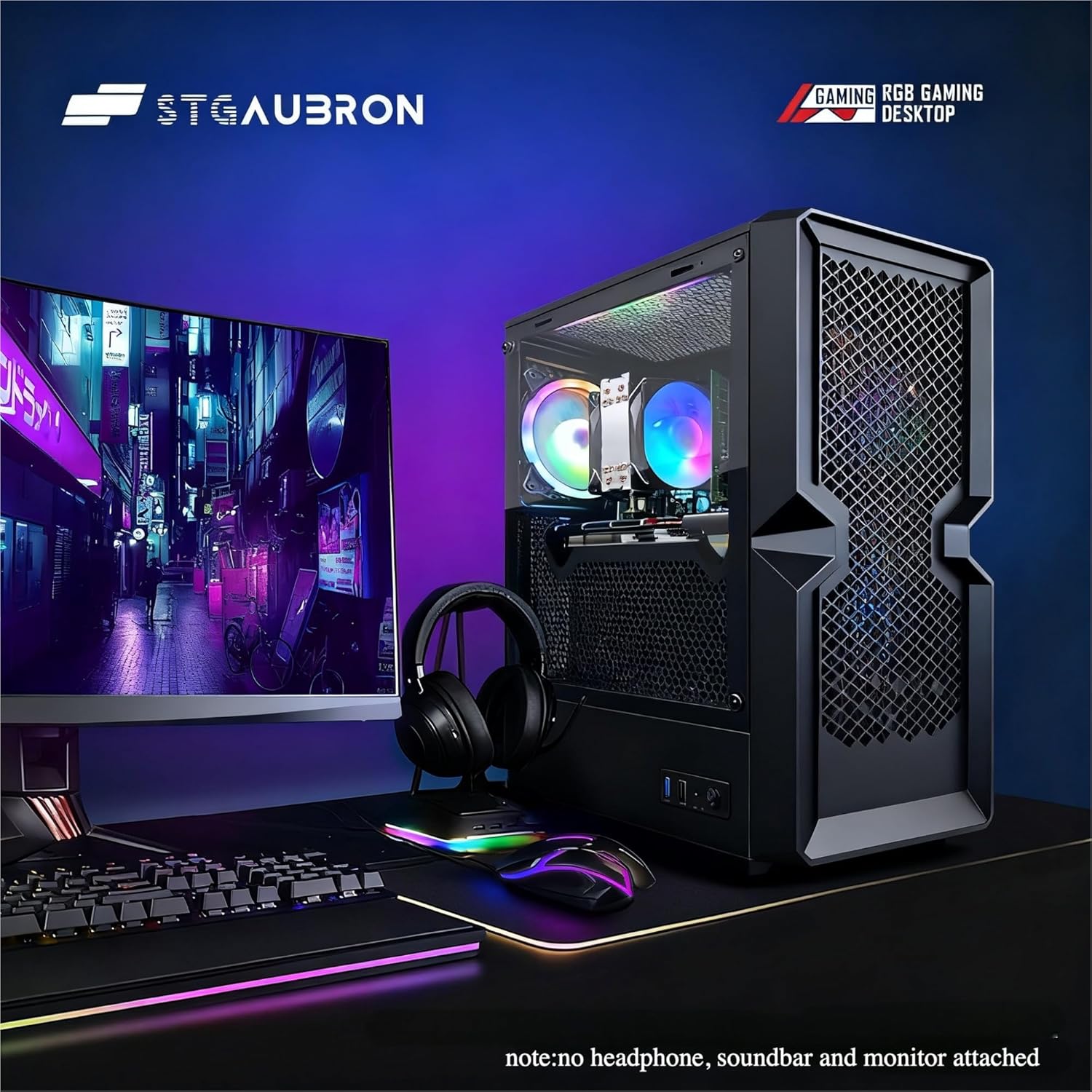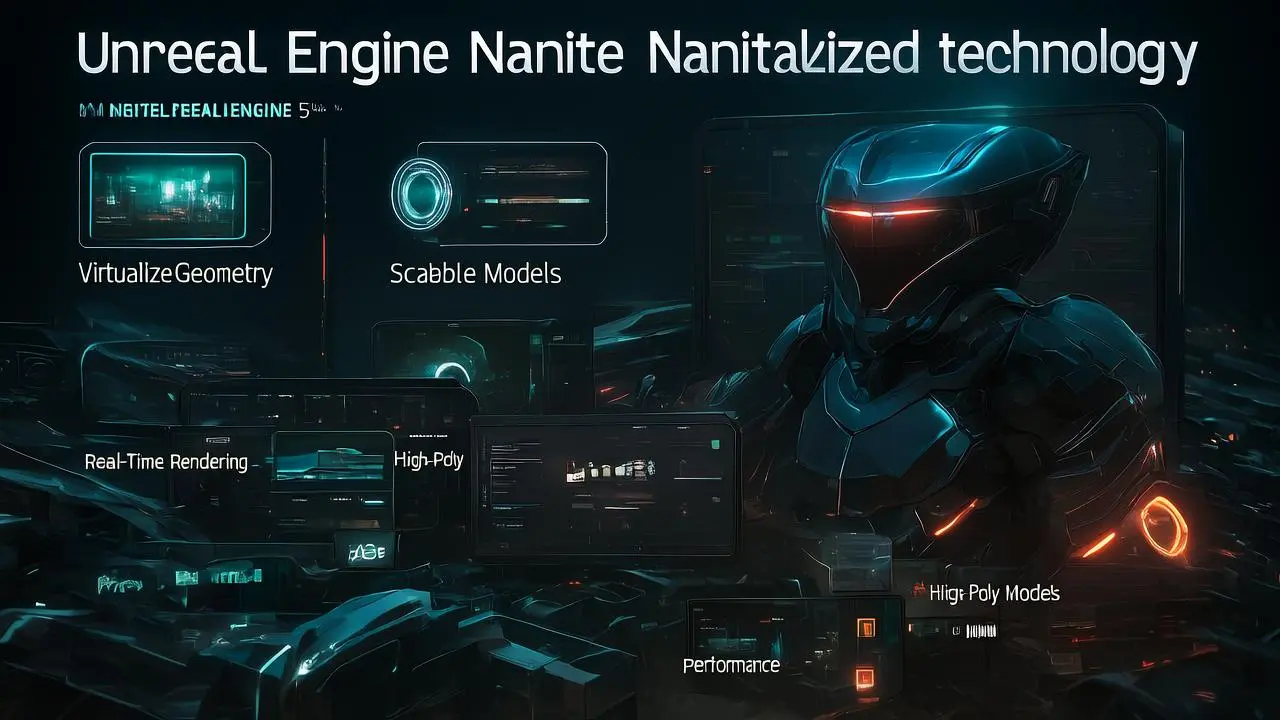Introduction
The release of Unreal Engine 5 marked a major turning point in the gaming industry, primarily thanks to the introduction of revolutionary technologies like Nanite. This technical innovation promises to radically transform how developers create and optimize their 3D content. Whether you’re passionate about game development or simply curious about the latest technological advances, this article will explain everything you need to know about this technology that’s creating a sensation in the gaming community.
What is Nanite Technology?
Nanite represents one of the most impressive features of Unreal Engine 5. It’s a virtualized geometry system that allows developers to import and display assets with billions of polygons without compromising game performance.
Unlike traditional game engines that require multiple levels of detail (LOD) to optimize performance, Nanite automatically manages this complexity. This revolutionary technology allows artists to focus on creation rather than technical optimization.
Core Principles of Nanite
The technology is based on several innovative concepts:
• Virtualized geometry: Intelligent streaming of geometric details
• Adaptive rendering: Automatic adjustment based on distance and resolution
• Real-time optimization: Dynamic system resource management
• Simplified pipeline: Reduced manual optimization work
How Nanite Technology Works in Unreal Engine 5
Geometry Virtualization
The heart of Nanite lies in its ability to virtualize geometry. Instead of loading all polygons of an object into memory, the system only loads details visible on screen. This revolutionary approach in Unreal Engine 5 allows for displaying scenes of unprecedented complexity.
The process works by dividing meshes into hierarchical clusters. Each cluster contains an optimal number of triangles, allowing the engine to select the appropriate level of detail in real-time.
Intelligent Streaming
Nanite integrates a sophisticated streaming system that predicts which geometric details will be needed. This prediction is based on:
- Camera position and viewing direction
- Player movement speed
- Screen resolution and object distance
- Visual importance of elements in the scene
Real-time Adaptive Rendering
One of the technical achievements of Unreal Engine 5 with Nanite is its ability to automatically adapt rendering. The system continuously adjusts:
• Number of polygons displayed per object
• Resolution of associated textures
• Applied post-processing effects
• GPU resource allocation
Revolutionary Advantages of Nanite
For Developers
Nanite technology transforms the development workflow in Unreal Engine 5:
Artistic Pipeline Simplification:
• Elimination of manual LOD creation needs
• Direct import of high-resolution assets from modeling software
• Significant production time reduction
• Focus on creativity rather than technical optimization
Optimized Performance:
• Automatic memory management
• Efficient GPU resource utilization
• Stable framerate maintenance even with complex scenes
• Automatic scalability based on hardware
For Players
The gaming experience is significantly enhanced thanks to this Unreal Engine 5 innovation:
• Exceptional visual details without performance impact
• Reduced loading times through intelligent streaming
• Enhanced immersion through graphical fidelity
• Extended compatibility across different hardware configurations
Practical Applications in the Industry
AAA Games and Independent Productions
Nanite democratizes access to high-quality graphics. Independent studios can now create games visually comparable to AAA productions thanks to Unreal Engine 5 tools.
Architecture and Visualization
Beyond gaming, Nanite finds applications in:
• Architecture and design: Project visualization with photographic realism
• Cinema and animation: Complex scene creation for entertainment
• Training and simulation: Detailed environments for learning
• Marketing and presentation: Immersive product demonstrations
Comparison with Previous Technologies
Traditional Methods vs Nanite
Before Unreal Engine 5 and its Nanite technology, developers had to:
Traditional Approach:
- Create multiple LOD versions of each asset
- Manually optimize each detail level
- Manage transitions between LODs
- Balance visual quality and performance
With Nanite:
- Direct import of high-resolution assets
- Automatic real-time optimization
- Seamless and invisible transitions
- Maximum quality without performance compromise
Development Impact
This technological evolution in Unreal Engine 5 significantly reduces:
• Development time (up to 50% on certain projects)
• Artistic production costs
• Technical project complexity
• Entry barriers for small studios
Limitations and Technical Considerations
Hardware Requirements
While Nanite is optimized, certain considerations remain important:
Recommended Configuration:
• Modern GPU compatible with DirectX 12 or Vulkan
• Sufficient system memory (16GB+ recommended)
• SSD storage to optimize streaming
• Recent processor for clustering calculations
Current Limitations
Unreal Engine 5 and Nanite present some restrictions:
• Complex materials: Certain shaders may require adaptations
• Deformable objects: Limited support for vertex animations
• Transparency: Specific management required for transparent objects
• Dynamic lighting: Complex interactions with certain lighting systems
Optimization and Best Practices
Tips to Maximize Efficiency
To get the most out of Nanite in Unreal Engine 5:
- Prepare Your Assets Correctly
• Use high-resolution meshes as source
• Optimize UVs and materials
• Follow naming conventions - Configure Your Project Appropriately
• Enable Nanite in project settings
• Adjust settings according to your target platform
• Regularly test performance - Monitor Resource Usage
• Use integrated profiling tools
• Monitor memory consumption
• Optimize materials and textures
Frequently Asked Questions (FAQ)
Is Nanite compatible with all types of projects?
Nanite works optimally with projects using complex static geometry. For projects with lots of vertex animations or deformation effects, a hybrid approach may be necessary in Unreal Engine 5.
What are the requirements to use Nanite?
You need Unreal Engine 5 or later, a DirectX 12/Vulkan compatible GPU, and it’s recommended to have at least 16GB of RAM for optimal performance.
Does Nanite automatically improve all assets?
No, assets must be specifically configured to use Nanite. However, the conversion process is generally simple and automated in Unreal Engine 5.
Does this technology work on consoles?
Yes, Nanite is optimized to work on PlayStation 5, Xbox Series X/S, and PC. Epic Games worked closely with manufacturers to ensure optimal compatibility.
What’s the impact on build times?
Paradoxically, Nanite can reduce build times because it eliminates the need to generate multiple LODs, even though initial asset conversion may take time.
Conclusion: The Future of Development with Unreal Engine 5
Nanite technology represents a major advance that redefines creative possibilities in Unreal Engine 5. By eliminating traditional constraints related to polygon management, this innovation allows developers to focus on what really matters: creating exceptional experiences.
Whether you’re a AAA studio or an independent developer, Nanite democratizes access to cinematic-quality graphics. This technology isn’t just a tool—it’s a revolution that opens new creative perspectives.
Ready to explore the infinite possibilities of Unreal Engine 5? Download the latest version and discover how Nanite can transform your projects. Join the community of developers shaping the future of gaming with this revolutionary technology.
External Sources:
RealWater2.0 Blender Water shader addon
Cycles is required to display the best and most complete effect, Eevee is not capable of displaying the full effect. This node was created in Blender 3.4.1 and may not be compatible with older versions.

STGAubron Gaming PC Desktop
STGAubron Gaming PC Desktop Computer, Intel Core i5 up to 3.6G, Radeon RX 590 8G, 16GB RAM, 1TB SSD, 600M WiFi, BT 5.0, RGB Fan x3, Windows 11 Home
Articles
- How to Optimize a Gaming PC for Smooth Streaming (Complete Guide)
- Unity Game Maker Create Amazing Games Easily
- Streaming vs 8K Gaming: How to Balance Your Setup
- Complete Guide to Unreal Engine 5’s Nanite Technology: Graphics Revolution for Developers
- The Ultimate Guide to Building a Successful Mobile Gaming Studio

